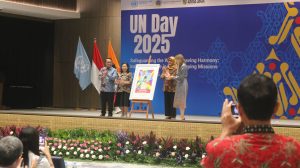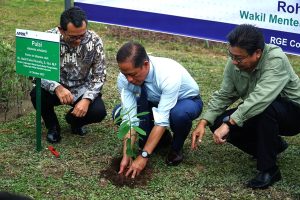Jakarta – Air pollution in Indonesia has become a serious threat to public health, according to the latest analysis from Principal Expert Researcher of the Center for Public Health and Nutrition Research of the National Research and Innovation Agency (BRIN), Prof. Dede Anwar Musadad.
He said the top five diseases caused by air pollution in 2019 were stroke, ischemic heart disease, diabetes mellitus, chronic obstructive pulmonary disease (COPD), and neonatal disorders.
In a webinar in early May, Prof. Musadad explained that the high burden of diseases caused by air pollution mainly occurred in provinces with high air pollution levels, especially in eastern Indonesia such as West Sulawesi, North Maluku, East Nusa Tenggara (NTT), Gorontalo, and Central Sulawesi.
“According to age, the burden of disease due to high air pollution is mainly experienced by the newborn group, while according to gender, men have higher rates than women,” he said.
The study also revealed that the most impactful type of air pollution was indoor (household) air pollution, while ambient (outdoor) air pollution showed no significant relationship.
From the analysis, it appears that there is a link between high levels of respiratory illness in children and toddlers and high levels of air pollution in the household. The habit of bringing babies or toddlers while cooking in the kitchen is one of the factors that increase the risk of smoke exposure for them.
In this context, Prof. Musadad emphasised the importance of health promotion related to the habit of burning waste in the household, the use of safer cooking fuels, and the habit of bringing children when cooking.
“In addition, it is necessary to continue to promote policies to shift the use of environmentally unfriendly fuels to the use of safer fuels, such as electricity and gas,” he added.
Despite the decline in air pollution levels from 1990 to 2019, Prof. Musadad said that efforts to control air pollution must continue by paying attention to variations in pollution between provinces, pollution sources, age groups, and gender.
WHO defines air pollution as environmental contamination both indoors and outdoors caused by various agents such as chemical, physical, biological, and other substances that alter the natural characteristics of the atmosphere, which are generally caused by human activities. (Hartatik)















